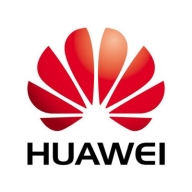


Forcepoint Next Generation Firewall and Huawei NGFW compete in the cybersecurity market. Despite Forcepoint's attractive pricing and support, Huawei's enhanced capabilities make it a preferred choice for users.
Features: Forcepoint offers strong integration capabilities, comprehensive threat intelligence, and robust customer support. Huawei provides high throughput, extensive protocol support, and advanced threat detection, giving it an edge for users prioritizing advanced functionalities.
Room for Improvement: Forcepoint needs better performance optimization, simplified management features, and quicker update releases. Huawei could improve documentation, speed of patch releases, and customer service responses.
Ease of Deployment and Customer Service: Forcepoint is praised for straightforward deployment and excellent customer service. Huawei has a commendable deployment model but mixed feedback on customer service responsiveness.
Pricing and ROI: Forcepoint is recognized for cost-effectiveness and solid return on investment, appealing to budget-conscious buyers. Huawei, though more expensive, is considered worth the investment due to its superior features.
Clients are now comfortable and not wasting productive hours on IT support.
The automation part is giving us a cost benefit and speed; we can react faster.
It's a very useful tool to mitigate and protect your enterprise.
Cybersecurity ROI could be $1 or $100 million, depending on the risk of data behind it.
They offer very accurate solutions.
The quick resolution of issues with Fortinet FortiGate is due to the support of the company and the fact that the equipment is easy to work with.
I would rate the technical support for Fortinet FortiGate a ten out of ten.
Unlike Fortinet where you can escalate an issue and quickly get responses from the development team, Forcepoint's process seems slow and challenging.
Technical support is sometimes slow to respond, and it takes longer to resolve issues.
On a scale of 1 to 10 for customer service for Forcepoint Next Generation Firewall, I would rate it at least 9, 9.5.
They scale up really well from smaller models like the FortiGate 40 and 50 to bigger sites with the FortiGate 100 for more throughput - up to enterprise datacenters.
The variation comes in terms of the interfaces and throughputs, but from a security perspective, you get the same benefit, irrespective of whether you have an entry-level unit or an enterprise.
We determine sizing based on multiple factors: number of users, available links, traffic types, server count, services in use, and whether services will be published.
There are restrictions in the firewall manager and limitations when deploying for cloud environments.
We're experiencing 99.999% availability consistently.
I would rate the stability of Fortinet FortiGate a ten out of ten.
Currently, we are experiencing a general outage of one of the main internet service providers of the Dominican Republic, and we have not been impacted in our operations because with SD-WAN, we have another internet service provider and we are working with the second WAN connection without any disruption.
Investing in a solution that can accommodate such growth would be more cost-effective than repeatedly purchasing new hardware.
While Fortinet claims to offer a comprehensive network solution, it falls short in addressing computer application issues, particularly server security.
When considering Sophos XG, which we also use, the logging and reporting functionality is notably more efficient.
Fast response and efficient handling of issues, similar to how Fortinet responds, would be great.
AI improvements could be beneficial, as having AI capabilities has become an important checkmark feature.
I recommend that additional features be included in a single license to avoid the need for extra licensing costs.
Last year, I renewed the support for three years, which can sometimes be expensive but depends on the security benefits and how it helps us.
It offers cost savings as it is generally cheaper than the competition.
It is about 20% cheaper.
The costs can be high since additional features require separate licenses.
In terms of pricing, I would place Forcepoint in the middle when compared to other firewalls like Fortinet and Palo Alto.
In terms of security, we have not experienced any security flaws or loopholes, and it has proven to be quite stable.
FortiGate has helped reduce the risk of cyberattacks that might disrupt our client's production.
These features help reduce our downtime, manage the ISPs, and deploy SLAs for all the website traffic.
With Forcepoint, this process is simplified compared to others like Fortinet.
The most valuable features of Forcepoint Next Generation Firewall are the advanced threat protection, including features like IPS and DDoS prevention, which help avoid internal DDoS attacks.
From a configuration standpoint, it has been easy to manage.
| Product | Market Share (%) |
|---|---|
| Fortinet FortiGate | 20.4% |
| Huawei NGFW | 1.0% |
| Forcepoint Next Generation Firewall | 0.5% |
| Other | 78.1% |



| Company Size | Count |
|---|---|
| Small Business | 350 |
| Midsize Enterprise | 130 |
| Large Enterprise | 187 |
| Company Size | Count |
|---|---|
| Small Business | 26 |
| Midsize Enterprise | 8 |
| Large Enterprise | 11 |
| Company Size | Count |
|---|---|
| Small Business | 10 |
| Midsize Enterprise | 6 |
| Large Enterprise | 7 |
Fortinet FortiGate excels in providing integrated VPN, firewalling, and Unified Threat Management (UTM) with centralized management and high availability. It supports remote access and comprehensive threat protection, making it a preferred choice for securing networks.
Fortinet FortiGate offers a robust security platform with features such as strong intrusion prevention, application control, and web filtering. Its integration with Active Directory and SD-WAN functionality provides scalable solutions for large networks. Users appreciate its ease of use through centralized management interfaces, ensuring robust security with flexible configurations. However, FortiGate could enhance its graphical interface and technical support responsiveness, address firmware bugs and costly licensing, improve logging, integrate better with third-party tools, and strengthen scalability and memory for log storage. Complexity in configuration and the need for intuitive features are noted challenges, and there's a demand for advanced security, zero-trust capabilities, and AI integration.
What are the key features of Fortinet FortiGate?Fortinet FortiGate is widely implemented across industries like education, finance, and government. Companies use it for firewall protection, VPN, and SD-WAN capabilities, ensuring secure perimeter and data center security. It facilitates remote access management and traffic routing optimization, offering reliable security and connectivity solutions.
Forcepoint Next Generation Firewall is a versatile and comprehensive solution for perimeter security, offering features such as SD-WAN, IPS, VPN, and cloud or on-premises subscription keys. It is preferred by many clients over Cisco and is used for obligation redundancy, VPN access, and as the main point of security in infrastructure.
The product is praised for its simplicity, flexibility, complete feature set, scalability, and central management capabilities. Other valuable features include IPS, firewall, sandbox, application control, filtering, security management center, connectivity, and integration capabilities.
Huawei's Next-Generation Firewall (NGFW) is a cutting-edge security solution designed to protect networks from advanced threats. With its advanced threat detection and prevention capabilities, the Huawei NGFW ensures the highest level of network security.
The product offers comprehensive security features, including intrusion prevention, application control, and URL filtering, to safeguard against a wide range of cyber threats. The NGFW also provides deep packet inspection and advanced threat intelligence, enabling real-time threat detection and response.
With its high-performance architecture, the Huawei NGFW delivers fast and efficient security without compromising network performance. It is easy to deploy and manage, thanks to its intuitive user interface and centralized management platform.
The NGFW also supports flexible deployment options, including virtualization and cloud integration, making it suitable for various network environments.
We monitor all Firewalls reviews to prevent fraudulent reviews and keep review quality high. We do not post reviews by company employees or direct competitors. We validate each review for authenticity via cross-reference with LinkedIn, and personal follow-up with the reviewer when necessary.